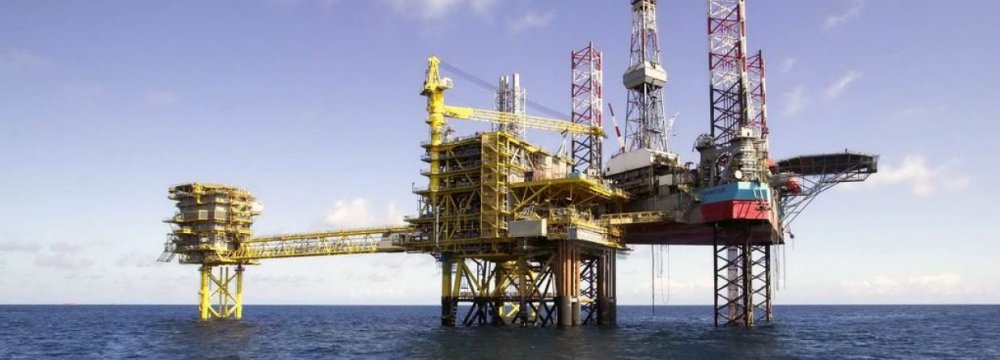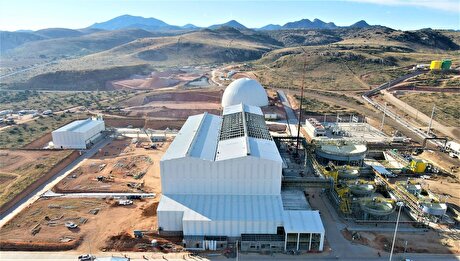
Maersk Group to Study South Pars Oil Layer

 The oil layer of South Pars is estimated to hold up to 20 billion barrels of oil in place.
The oil layer of South Pars is estimated to hold up to 20 billion barrels of oil in place.
Iran is close to signing an agreement with Danish conglomerate Maersk Group to study the development potential of the oil layer of South Pars Gas Field in the Persian Gulf, said Gholamreza Manouchehri, deputy for engineering and development affairs at the National Iranian Oil Company.
"A preliminary agreement has been reached with Maersk to study the South Pars oil layer and we look forward to signing a heads of agreement with the Danish company," Manouchehri was quoted as saying by Tasnim News Agency on Tuesday.
A heads of agreement (HOA) is a non-binding document which sets out the key terms of a proposed agreement between parties. It is meant to serve as a guideline and may not be comprehensive enough to cover all the basis relevant to a binding contract.
Drawing crude oil from South Pars, the world's largest gas field shared between Iran and Qatar, is now a top priority for NIOC, Manouchehri said.
Tehran plans to develop the South Pars oil layer under the framework of Iran Petroleum Contract, the new model of contracts geared to attracting international oil and gas majors.
Manouchehri added that the NIOC "has opened talks with several companies" over developing the South Pars oil layer, adding that "production will begin by the yearend (March 2017)". Iran is keen to draw 35,000 barrels of crude per day from the joint field in the first phase.
Maersk produces oil from the Danish and UK sections of the North Sea, Qatar, Algeria and Kazakhstan. It supports global oil and gas production by providing modern drilling services to oil companies around the world.
According to reports, the oil layer of South Pars is approximately 100 kilometers off the coasts of Iran in the Persian Gulf, an area shared between Iran and Qatar.
Estimates suggest the joint field could hold up to 20 billion barrels of oil in place.
Oil, Gas Race
Officials say Iran is trailing Qatar in oil production from South Pars, known as North Dome in the Qatari side, because of the complex geological structure of the region and a lack of advanced exploration and drilling equipment.
The tiny Arab neighbor, which started developing the oil layer in 1991, has already drilled more than 300 wells with the help of international oil giants. It has reportedly extracted more than 1 billion barrels of crude from the joint field during the last 25 years.
National Iranian Oil Company reportedly assigned Petropars, one of its wholly-owned subsidiaries, in 2004 to develop the oil layer of South Pars, but the project has been plagued by delays as well as the international economic sanctions introduced at the turn of the decade over Iran's nuclear program dispute.
According to reports, Iran has boosted gas production from the giant gas field to 515 million cubic meters per day and the volume is expected to reach 540 mcm/d by March, the end of the current Iranian fiscal year.
Following the launch of several South Pars development projects in the past three years, Iran hopes to match or outmaneuver Qatar in gas production from the joint field in the coming year.


Trump weighs using $2 billion in CHIPS Act funding for critical minerals

Electra converts debt, launches $30M raise to jumpstart stalled cobalt refinery

Codelco cuts 2025 copper forecast after El Teniente mine collapse

Barrick’s Reko Diq in line for $410M ADB backing

Abcourt readies Sleeping Giant mill to pour first gold since 2014

SQM boosts lithium supply plans as prices flick higher

Nevada army depot to serve as base for first US strategic minerals stockpile

Pan American locks in $2.1B takeover of MAG Silver

Viridis unveils 200Mt initial reserve for Brazil rare earth project

Kyrgyzstan kicks off underground gold mining at Kumtor

Kyrgyzstan kicks off underground gold mining at Kumtor

KoBold Metals granted lithium exploration rights in Congo

Freeport Indonesia to wrap up Gresik plant repairs by early September

Energy Fuels soars on Vulcan Elements partnership

Northern Dynasty sticks to proposal in battle to lift Pebble mine veto

Giustra-backed mining firm teams up with informal miners in Colombia

Critical Metals signs agreement to supply rare earth to US government-funded facility

China extends rare earth controls to imported material

Galan Lithium proceeds with $13M financing for Argentina project

Kyrgyzstan kicks off underground gold mining at Kumtor

Freeport Indonesia to wrap up Gresik plant repairs by early September

Energy Fuels soars on Vulcan Elements partnership

Northern Dynasty sticks to proposal in battle to lift Pebble mine veto

Giustra-backed mining firm teams up with informal miners in Colombia

Critical Metals signs agreement to supply rare earth to US government-funded facility

China extends rare earth controls to imported material

Galan Lithium proceeds with $13M financing for Argentina project

Silver price touches $39 as market weighs rate cut outlook

















